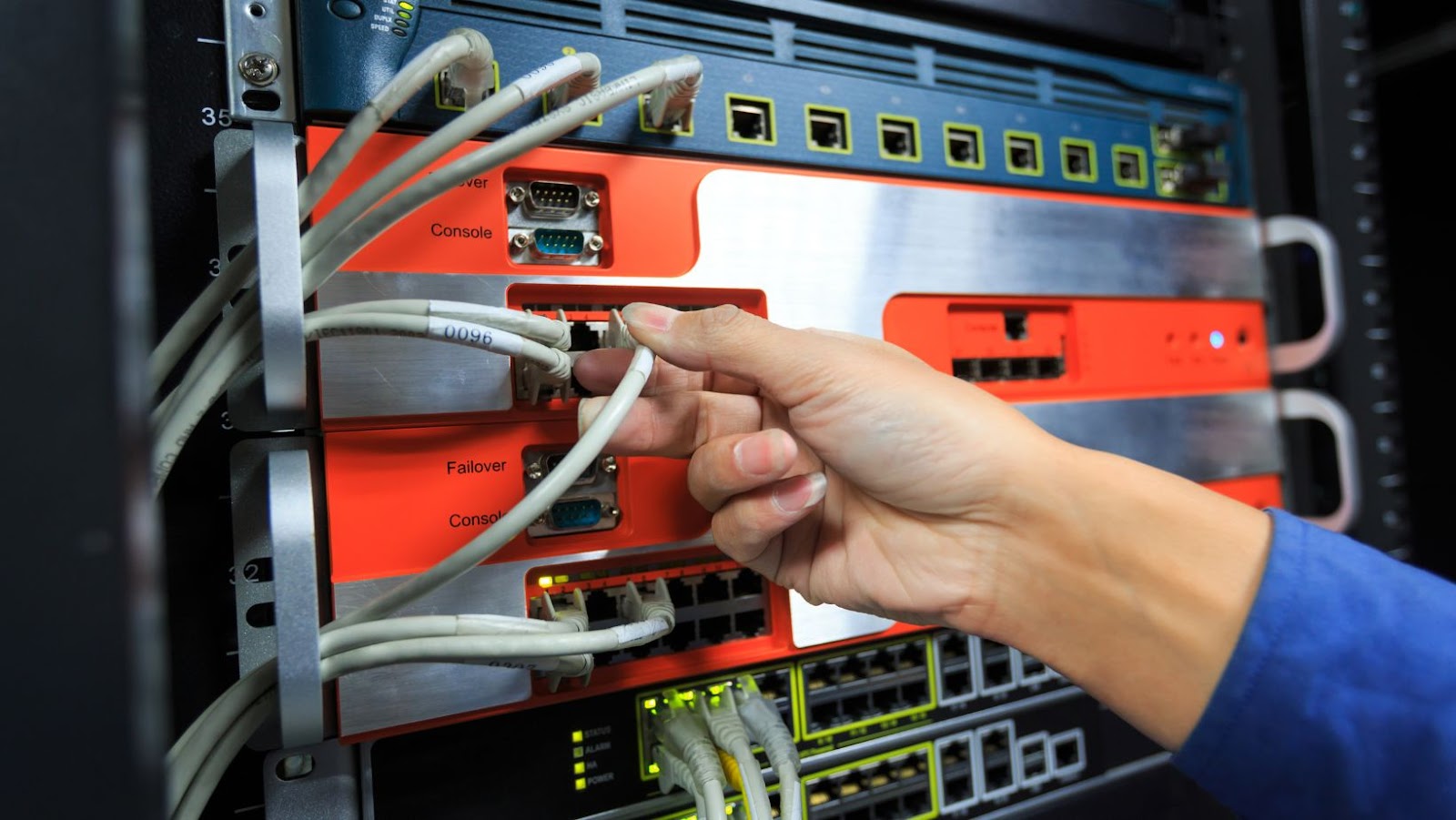
Advances in technology have drastically changed the way we communicate. In the Tech Worker Handbook, you will find that technology has had a profound impact on many aspects of communication, from the way we interact with each other to the way we transmit and store data.
This section will provide a comprehensive overview of some new technologies that have revolutionized communication.
Tech Worker Handbook
Communication is exchanging meanings, messages or information between two or more people. The exchange may be verbal or non-verbal, and occurs through different media such as body language, words and languages, written letters, pictures and diagrams, telephones and computers. It is a process which requires understanding from both the sender and the receiver of a message.
As communication technology has evolved, it has had an increasingly deep impact on all aspects of our lives including our interpersonal relationships. Technology has changed how people communicate in many ways – how we speak to one another using various digital applications, how information is transferred quickly between two computers across the world, how images can be shared across multiple platforms easily and without delay. Innovation in communication technology continues to reshape traditional methods of communicating between humans.
Definition of Technology
Technology is defined simply as the application of scientific knowledge for practical purposes. It refers to the use of tools, machines, materials and systems as well as organizational techniques and skill that help transform raw materials into useful goods and services. Communication refers to the invention and application of tools such as telephones, computers and satellites to facilitate modern communication.
Today, technology plays an important role in everyday communication by bringing people together through various means such as social media platforms like Facebook or Twitter, Instant Messaging services like Skype or Whatsapp, Conference Calling facilities or Video Conferencing. Technology has allowed for faster interaction between people and expediting the transfer of documents and data via emails and internet based applications. Social media also serves to bring greater connectivity in day-to-day interactions among family members from different parts of the globe. With instant access to relevant information and news from around the world through technologies like Google Alerts or RSS feeds, one can stay informed about recent global events at all times.
Technology’s Impact on Communication
Technology has had a profound impact on how we communicate. From the invention of the telephone to the rise of social media, technology has shaped how we interact with one another and how we stay connected.
This Tech Worker Handbook will discuss the ways that technology has revolutionized communication and the impact that it has had on our lives.

Increased Connectivity
The development of technology has revolutionized the way people communicate, widening the possibilities for interpersonal and business relationships. Advances in communication technologies have enabled people to connect more quickly, thoroughly, and securely than ever before.
With improved telecommunications networks and the introduction of innovative mobile devices such as smartphones, tablets, and wearables, global access to digital communication is available around the clock. By connecting to available wireless networks or fiber optic broadband services supplying high speed internet over landlines individuals can connect with friends and colleagues instantly from any location while on the move. This unprecedented capability has radically altered how information is received, shared, processed and stored worldwide.
The interaction possible between two users via instant messaging on a device allows a variety of data such as pictures, videos or written messages to be sent in real-time right across the world. Long distance calls over landlines or via internet calling services are becoming increasingly common due to lower cost access than previously offered by long-distance network providers such as telcos. As well as providing further accessibility across continents telephone conferences using specialized apps have become among the most effective ways for remote teams to collaborate and communicate regularly regardless of time zones.
Another type of increased connectivity technology has made possible is through social media platforms used extensively by customers all over the globe. This has allowed businesses worldwide not only to market directly but also acquire feedback instantly for their services or products from consumers who cannot physically enter establishments due to distances involved. Technology’s impact may also be seen in virtual meetings which use video conferencing techniques that allow managers in different working environments, such as offices at opposite ends of a country, to communicate instantly with each other whether it be related to product launches, sales negotiations or disruptions in operations etc. However, these often require specialized software applications.
Improved Efficiency
With the development of increasingly sophisticated technology, how people communicate has drastically changed over the past few decades. From phones and computers to other devices equipped with advanced protocols, technology has enabled businesses, organizations, and individuals to communicate more efficiently than ever before.
Communication is necessary to succeed in almost any field, and technology has revolutionized the way we exchange information with one another. Modern communication tools allow conversations in real time while promoting convenience and cost-effectiveness. As a result, users have access to more opportunities that can drive productivity.
Overall, technology has allowed people to interact with each other more effectively by providing them with quick and reliable methods of communication that enable them to exchange information without having to be in the same room or even on the same continent. Teleconferencing systems facilitate meetings among members located in various locations worldwide, while instant messaging programs keep everyone connected in near real time. Additionally, video messaging services such as Skype allows users from opposite parts of the world see each other face-to-face during conversations.
Such advanced forms of communication make it possible for people who are thousands of miles apart stay connected via numerous digital platforms like never before, allowing them access improved collaboration between their peers and colleagues on matters related to work or business even if they are thousands of miles away from each other.

Increased Accessibility
Increased accessibility to many types of digital communication has had a wide range of impacts on how people communicate. More numerous, accessible and lightweight communication technologies mean that people are now able to communicate with each other in a variety of ways and across greater distances than ever before. Previously inaccessible or expensive modes of communication, like cross-continental phone calls or international letters, can now be achieved easily and inexpensively.
One noteworthy impact has been that there are now more channels for people to stay in touch when separated by distance — such as instant messaging tools, email services and video conferencing software. This has made it easier for friends and family who are living apart to stay connected with each other through multiple modes of communication without having to physically meet in person or maintain expensive long distance relationships.
In addition, the rise of digital media has allowed individuals around the world to take part in conversations they would not have been privy to before — with news sites offering users the ability to submit comments from anywhere on the globe and networking services allowing users from various countries to understand each other and their opinions more so than ever before. Even though the digital revolution means that more voices can be heard than ever, it also creates new challenges for effective global communications due its challenging economic sustainability model for smaller organizations.
Benefits of Technology for Communication
Technology has revolutionized communication, providing individuals with the tools to easily communicate with each other around the world. Digital communication has become essential to our day-to-day lives, from social media to video conferencing.
In this Tech Worker Handbook, we will explore the various benefits of digital communication, and how it has impacted how we communicate.
Increased Productivity
The advances in digital technology have enabled individuals and businesses to communicate with each other more quickly and effectively than ever before. Thanks to the internet, people can engage with others across both long and short distances by using devices such as smartphones, tablets, laptops and desktop computers.
The adoption of technology in communication has enabled people to remain productive while they are miles apart from each other. It is also an efficient way of exchanging information, thereby speeding up the productivity rate. For instance, scientists who are collaborating on a study can be connected via audio/video conferencing calls or by using virtual chatrooms that make it easier for them to work together seamlessly. This eliminates the need for having face-to-face meetings or attending conferences in person.
In addition, utilizing new technologies such as email, instant messaging (IM), file sharing services, document collaboration programs and other online tools has made it even easier for employees from different locations to collaborate on projects without experiencing any form of latency or lag time. Companies have significantly improved their operational efficiency due to such technologies which help prevent wasted time due to unavoidable delays in communication that remain an everyday challenge when using traditional methods like phone or snail mail correspondence.
Improved Collaboration
With the advent of modern technology, there has been an unprecedented rise in collaboration among people. Chat rooms and emails have enabled colleagues to collaborate quickly, easily, efficiently and cost-effectively on projects. Video conferencing can allow for meetings that would have previously required travel, saving both time and money. Teams accurately track progress of projects through cloud computing services like Google Docs and other similar resources.
Technology has also changed the way businesses manage documents. Companies can now access data from anywhere anytime through cloud-based solutions like Google Docs. This allows employees to quickly share information for maximum efficiency and accuracy enabling them to work more productively as a group or individually. Employees across organizational structures stay connected in virtual spaces with email systems, calendars, team chat apps and more which aids collaboration within departments or globally dispersed teams working on larger projects.
The prevalence of instant communication also speeds up collaboration between members in an organization which leads to faster problem solving due to a larger pool of ideas as well as faster feedback loops resulting in a better product outcome. With alert systems such as desktop notifications, smartphones alerts etc., workforce members are continuously updated about any changes taking place in the project they are working on which creates better accountability within the organization leading to successful outcomes timely delivered products and services that meet customer needs even better than before possible without Technology enabled collaboration processes implememted by businesses worldwide!

Enhanced Communication
Technology has revolutionized the way people communicate, allowing them to connect with individuals all over the world in a matter of seconds. The ability to send messages, documents, photos and videos instantly has greatly enhanced communication. Besides simplifying text messaging and faxing, technology has enabled the use of various other communication platforms such as emails, blogs and social media.
This enhanced communication has profound benefits for both personal and professional relationships. With email and chat messaging services, we can stay connected even when separated by distance or time zone differences. These improved methods of communication also reduce misunderstanding and improve clarity by providing an immediate platform for discussion.
Businesses also reap huge benefits from this enhanced form of communication. Teams can easily collaborate on projects through internal chat functions or video conferencing tools. At the same time, customers can be contacted directly through customer support portals or social media channels like Facebook, Twitter and YouTube. Technology also allows businesses to quickly respond to customer inquiries or provide customer service outside normal working hours. Overall these improved methods of communication allow businesses to build relationships with their clients more quickly, effectively driving sales in a competitive landscape.
Challenges of Technology for Communication
Technology has had a major impact on nearly every aspect of life, communication included. Improved communications technology has made it easier to connect with people worldwide; however, there can also be challenges associated with this increased connectivity.
This Tech Worker Handbook section explores some of the challenges related to communication from a technological perspective.
Overdependence on Technology
As technology becomes more widespread, people have become increasingly dependent on it to meet their communication needs. Whether it’s sending an email to a colleague at work, connecting with friends on social media or engaging in online conversations, many of us now rely on technology to stay connected. While there are some advantages to relying on technology for communication such as saving time and money, there can also be drawbacks, particularly if it becomes our primary means of staying in touch.
One challenge associated with this is that we are often not getting the immediate feedback required for effective communication. When exchanging emails or messaging back and forth on social media platforms, people can take days to respond which can leave conversations incomplete or result in miscommunications due to delays. In addition, as we spend more and more time interacting through digital devices such as laptops, tablets and phones; we fail to establish real connections and interpersonal relationships that are vital for successful communication.
Another downside is increased risk of data breaches where confidential information can be leaked without consent. Numerous scams involve technology where personal information is put at risk when unsuspecting victims fall prey by revealing financial details or unintentionally downloading malware-infected programs onto their devices.
Finally, overreliance on digital technologies has resulted in us becoming addicted and unable to ‘unplug’ from a world dominated by electronic media which ultimately controls how we communicate with each other in both our personal and professional lives.
Lack of Personal Interaction
Many forms of communication powered by advanced technology lack the authenticity of true interpersonal interaction. Most communication today is done through technology, such as email and messaging applications. This type of communication is often less personal than an in-person conversation or meeting, leading to a higher risk for misunderstandings and miscommunication. When relying on digital communication solely, it’s easier to misinterpret messages due to lack of tone range in text-based platforms or minimal physical context from video-based platforms. It’s also harder to pick up on nonverbal cues, like facial expressions, that give insight into the tone of a conversation.
Moreover, relying heavily on remote forms of communication can sever relationships that have been built up over time with friends, family and coworkers. Time together used to be valued as an important part of fostering quality relationships. Still, now there’s more emphasis on time apart due to the increased convenience and efficiency of technology. This decreases our ability to connect at a deep level with one another while weakening the importance placed on our interactions with each other when separated by distance.
Decreased Privacy
The advent of technology has drastically impacted the way we communicate. Instant messaging, video conferencing, emails, and other forms of communication have made it easier to connect with others. This increased connectivity speeds up communication in business settings and makes connecting with friends easier and faster than ever.
However, this hyper-connectivity can also bring losses when it comes to privacy. For example, email accounts may be subject to hacking attempts or phishing attacks. Those who use social media platforms may find that their posts can be monitored more easily by others since everyone is connected as soon as something is posted. Companies can track customer preferences easily and users’ data often passes through multiple hands which can lead to breaches in private information.
What’s more, many websites collect personal information such as browsing habits or purchase history to show tailored ads or suggest products based on user behaviour – a practise that could be considered intrusive by some users. This decreased level of privacy when using technology makes it difficult for individuals to protect their personal information from being exposed or used without their consent.
Conclusion
Technology has come a long way since its inception. It has drastically changed how we communicate in our day-to-day lives. We can now connect with anyone across the globe instantly, regardless of their physical location.
Businesses have used technology to stay in touch with their stakeholders and customers, as well as streamline their workflows. In this Tech Worker Handbook, we will discuss the impact of technology on communication and how it has changed how we communicate.
tags = Personal preparedness assessment, Working with lawyers, whistleblowers who brought their stories to the media, profile act californiaeliascnbc tech worker handbook












